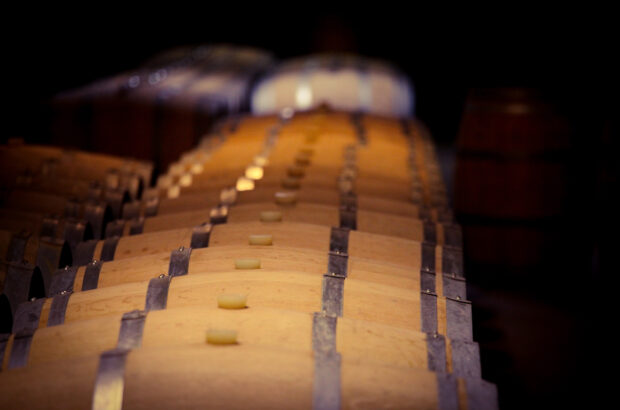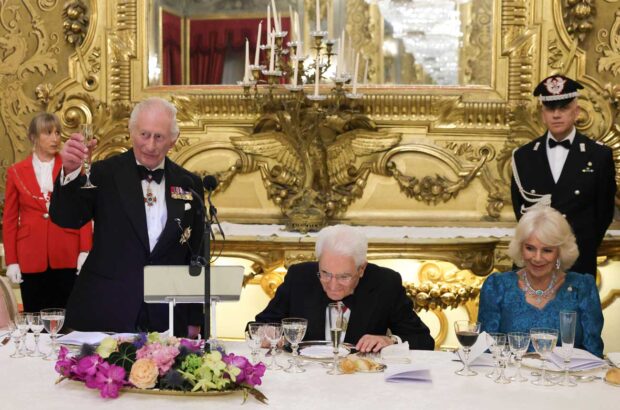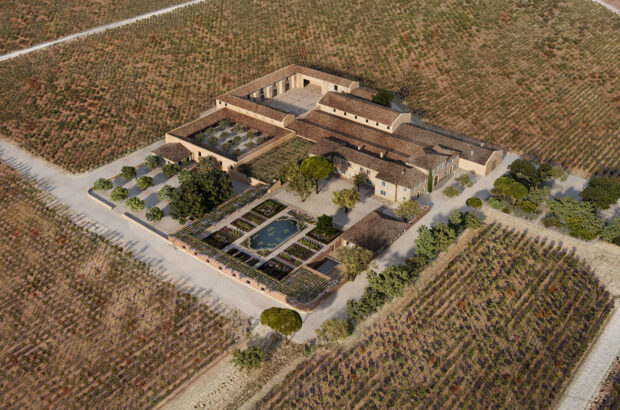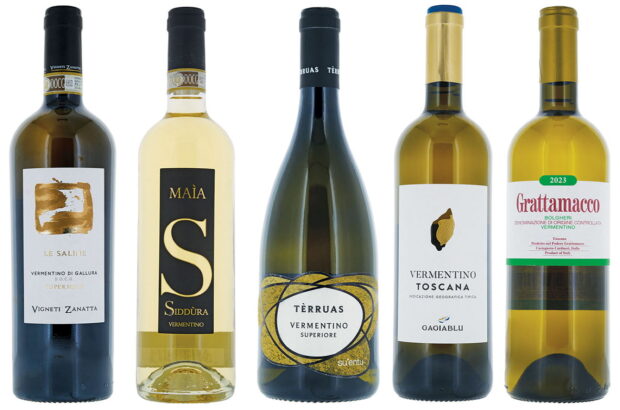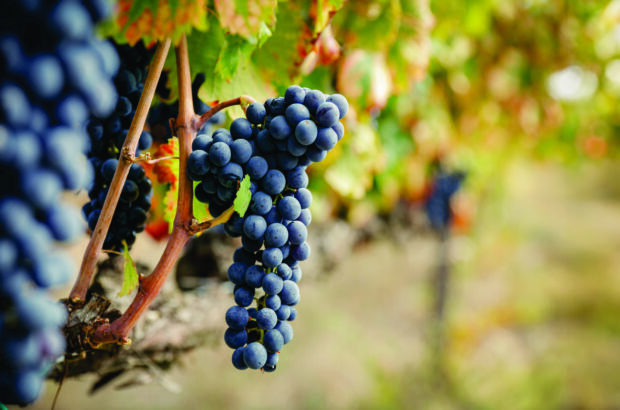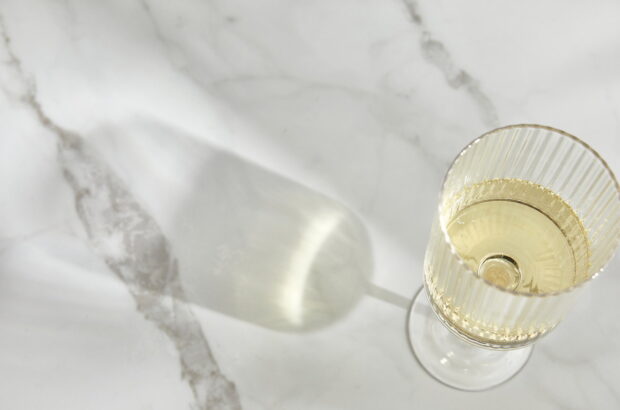At the beginning of the 1960s, Franciacorta was just a twinkle in the eye of Italian producers looking on at Champagne’s enduring success. Sixty years later, it has arguably become the most successful metodo classico appellation in Italy and is slowly gaining an international audience.
Scroll down for six Berlucchi Franciacorta tasting notes and scores
Success for Franciacorta should be measured differently to success for Prosecco – which is by far Italy’s most popular sparkling wine. Production of the former is tiny in comparison; approximately 18 million bottles compared to 600 million bottles annually, although Franciacorta is in fact far ahead of other metodo classico wines such as Trento DOC and Oltrepo Pavese.
{"content":"PC9wPgo8aDM+VmFuZ3VhcmQ8L2gzPgo8cD5JbiAxOTU1LCBHdWlkbyBCZXJsdWNjaGkgYXBwcm9hY2hlZCBvZW5vbG9naXN0IEZyYW5jbyBaaWxpYW5pIHRvIGhlbHAgaW1wcm92ZSB0aGUgcXVhbGl0eSBvZiBoaXMgJiM4MjE2O1Bpbm90IGRlbCBDYXN0ZWxsbyYjODIxNzsuIEEgc3RpbGwgUGlub3QgTm9pciBmaXJtbHkgaW4gdGhlIG1vdWxkIG9mIHRoZSByZWdpb24gYXQgdGhlIHRpbWUgdGhhdCB3YXMgYmVjb21pbmcgaGF6eSB3aGVuIGJvdHRsZWQuIFppbGlhbmkgc29vbiBhZGRyZXNzZWQgdGhpcyBpc3N1ZSBidXQsIGludHJpZ3VlZCBieSB0aGUgcHJvc3BlY3Qgb2YgbWFraW5nIGEgbWV0b2RvIGNsYXNzaWNvIHdpbmUgdG8gcml2YWwgQ2hhbXBhZ25lLCBwcm9wb3NlZCBhIGRyYXN0aWMgY2hhbmdlIG9mIGRpcmVjdGlvbiBCZXJsdWNjaGksIHdobyBzdWJzZXF1ZW50bHkgYWdyZWVkLjwvcD4KPHA+QWZ0ZXIgdGhlIGluaXRpYWwgZXhwZXJpbWVudGFsIHZpbnRhZ2VzLCBpbiBwYXJuZXJzaGlwIHdpdGggR2lvcmdpbyBMYW5jaWFuaSwgdGhlIGZpcnN0IGNvbnN1bWVyLXJlYWR5IEZyYW5jaWFjb3J0YSB3YXMgcmVsZWFzZWQgYnkgQmVybHVjY2hpIGluIDE5NjE6IDMsMDAwIGJvdHRsZXMgbGFiZWxsZWQgYXMgJiM4MjE2O1Bpbm90IGRpIEZyYW5jaWFjb3J0YSYjODIxNzsuPC9wPgo8cD48ZGl2IGNsYXNzPSJhZC1jb250YWluZXIgYWQtY29udGFpbmVyLS1tb2JpbGUiPjxkaXYgaWQ9InBvc3QtaW5saW5lLTIiIGNsYXNzPSJpcGMtYWR2ZXJ0Ij48L2Rpdj48L2Rpdj48L3A+CjxwPlRoZSB0ZWFtIGZvbGxvd2VkIHRoaXMgdXAgaW4gMTk2MiB3aXRoIGEgcm9zw6ksIGFnYWluIG1hZGUgaW4gdGhlIHRyYWRpdGlvbmFsIG1ldGhvZC4gRGVtYW5kIGluY3JlYXNlZCBhbmQgdGhlIGVzdGF0ZSB3YXMgc29vbiBwcm9kdWNpbmcgb3ZlciAxMDAsMDAwIGJvdHRsZXMgcGVyIHZpbnRhZ2UganVzdCBhIGZldyB5ZWFycyBsYXRlci48L3A+CjxwPlBpbm90IGRpIEZyYW5jaWFjb3J0YSB3YXMgcmUtbmFtZWQgQ3V2w6llIEltcGVyaWFsZSwgYW5kIHZpbnRhZ2UtZGF0ZWQgd2luZXMgd2VyZSBhZGRlZCB0byB0aGUgcmFuZ2UuPC9wPgo8cD5PdGhlciBwcm9kdWNlcnMgZm9sbG93ZWQgaW4gQmVybHVjY2hpJiM4MjE3O3MgZm9vdHN0ZXBzIGFuZCB0aGUgcXVhbGl0eSBvZiB0aGVzZSB3aW5lcyB3ZXJlIGZvcm1hbGx5IHJlY29nbmlzZWQgd2hlbiB0aGUgRnJhbmNpYWNvcnRhIERPQyB3YXMgZXN0YWJsaXNoZWQgaW4gMTk2Ny4gSW4gMTk5NSwgdGhlIERPQyB3YXMgZWxldmF0ZWQgdG8gRE9DRyBmb3IgdGhlIHJlZ2lvbiYjODIxNztzIG1ldG9kbyBjbGFzc2ljbyBzcGFya2xpbmcgd2luZXMuPC9wPgo8ZGl2IGNsYXNzPSJhZC1jb250YWluZXIgYWQtY29udGFpbmVyLS1tb2JpbGUiPjxkaXYgaWQ9InBvc3QtaW5saW5lLTMiIGNsYXNzPSJpcGMtYWR2ZXJ0Ij48L2Rpdj48L2Rpdj4KPHA+V2hlbiBHdWlkbyBCZXJsdWNjaGkgcGFzc2VkIGF3YXkgaW4gMjAwMCwgRnJhbmNvIFppbGlhbmkgb3ZlcnNhdyB0aGUgZXN0YXRlJiM4MjE3O3MgZGlyZWN0aW9uIGluIHRoZSBmaXJzdCB5ZWFycyBvZiB0aGUgbWlsbGVubml1bS4gVG9kYXksIEJlcmx1Y2NoaSBwcm9kdWNlcyBhcHByb3hpbWF0ZWx5IGZpdmUgbWlsbGlvbiBib3R0bGVzIGFubnVhbGx5LCB3aXRoIHRoZSBzZWNvbmQgZ2VuZXJhdGlvbiAmIzgyMTE7IENyaXN0aW5hLCBBcnR1cm8gYW5kIFBhb2xvIFppbGlhbmkgJiM4MjExOyBhdCB0aGUgaGVsbS48L3A+CjxwPkJlcmx1Y2NoaSBmYXJtcyBvdmVyIDUwMCBoZWN0YXJlcyBvZiB2aW5leWFyZHMuIEl0cyB2aXRpY3VsdHVyYWwgZXRob3MgcmV2b2x2ZXMgYXJvdW5kIG9yZ2FuaWMgZmFybWluZyAoYWxsIDUwMCsgaGVjdGFyZXMgYXJlIGJlaW5nIGNvbnZlcnRlZCB0byBvcmdhbmljKSwgaGlnaC1kZW5zaXR5IHBsYW50aW5nLCBzcHVycmVkLWNvcmRvbiB0cmFpbmluZywgY292ZXItY3JvcHBpbmcsIGFuZCBjcm9wIHRoaW5uaW5nLjwvcD4KPGRpdiBjbGFzcz0iYWQtY29udGFpbmVyIGFkLWNvbnRhaW5lci0tbW9iaWxlIj48ZGl2IGlkPSJwb3N0LWlubGluZS00IiBjbGFzcz0iaXBjLWFkdmVydCI+PC9kaXY+PC9kaXY+CjxwPlRoZSByZXN1bHQgaXMgaGlnaC1xdWFsaXR5IGZydWl0IHVzZWQgaW4gYSB2YXJpZXR5IG9mIGRpZmZlcmVudCB3aW5lcywgZnJvbSB0aGUgQ3V2w6llIEltcGVyaWFsZSBCcnV0ICg5MCUgQ2hhcmRvbm5heSBhbmQgMTAlIFBpbm90IE5vaXIpIHRvIHRoZSBQYWxhenpvIExhbmEgRXh0cmVtZSAoMTAwJSBQaW5vdCBOb2lyIGZyb20gdmluZXMgbmVhciB0aGUgd2luZXJ5LCBtYXR1cmVkIGZvciBuaW5lIHllYXJzIHN1ciBsaWUpLjwvcD4KPHA+QnV0IHBlcmhhcHMgdGhlIG1vc3QgcmVjb2duaXNhYmxlIHJhbmdlIGluIHRoZSBCZXJsdWNjaGkgcG9ydGZvbGlvIGlzIHRoZSAmIzgyMTc7NjEuIENvbXByaXNpbmcgc2V2ZXJhbCBkaWZmZXJlbnQgZXhwcmVzc2lvbnMgb2YgdGhlIHRlcnJpdG9yeSBmcm9tIHNvbWUgb2YgdGhlIGVzdGF0ZSYjODIxNztzIGJlc3QgZnJ1aXQsIHRoZXNlIHdpbmVzIHNob3djYXNlIGhhbmRzb21lIENoYXJkb25uYXkgYW5kIGVsZWdhbnQgUGlub3QgTm9pciBpbiBOViwgdmludGFnZSwgcm9zw6ksIFNhdMOobiwgQnJ1dCBhbmQgQnJ1dCBOYXR1cmUgc3R5bGVzLjwvcD4KPGRpdiBjbGFzcz0iYWQtY29udGFpbmVyIGFkLWNvbnRhaW5lci0tbW9iaWxlIj48ZGl2IGlkPSJwb3N0LWlubGluZS01IiBjbGFzcz0iaXBjLWFkdmVydCI+PC9kaXY+PC9kaXY+CjxoMz5XaGF0JiM4MjE3O3MgbmV4dD88L2gzPgo8ZGl2IGNsYXNzPSJpbmplY3Rpb24iPjwvZGl2Pgo8cD5PbmUgb2YgRnJhbmNpYWNvcnRhJiM4MjE3O3Mgc3RyZW5ndGhzIGlzIGl0cyBkaXZlcnNpdHkgb2Ygc3R5bGVzLCBwYXJ0aWN1bGFybHkgdGhlIGRlbGljaW91c2x5IHNvZnQgU2F0w6huIHdoaWNoIHJlcHJlc2VudHMgYSBwb2ludCBvZiBkaWZmZXJlbmNlIHRvIG1hbnkgb3RoZXIgc3BhcmtsaW5nIHdpbmVzLiBUaGUgQmVybHVjY2hpIGV4YW1wbGVzIGRvIGEgZ3JlYXQgam9iIG9mIHNob3djYXNpbmcgdGhlIGFwcGVsbGF0aW9uJiM4MjE3O3MgdmFyaWV0eSBhbmQgcXVhbGl0eSB0byBzdXBlcmIgZWZmZWN0LCB5ZXQgR2lhY29tbyBCZXJsdWNjaGkmIzgyMTc7cyBsZWdhY3kgc2VlbXMgc29tZXdoYXQgaW5jb21wbGV0ZSAmIzgyMTE7IG9ubHkgYSByZWxhdGl2ZWx5IHNtYWxsIG51bWJlciBvZiBpbnRlcm5hdGlvbmFsIHdpbmUgbG92ZXJzIGhhdmUgc28gZmFyIGRpc2NvdmVyZWQgdGhlc2Ugd2luZXMuPC9wPgo8cD5BdmFpbGFiaWxpdHkgb3V0c2lkZSBJdGFseSBpcyBwYXRjaHkgYXQgYmVzdCBhbmQgdGhlIHByZW1pdW0gcG9zaXRpb25pbmcgb2YgdGhlc2Ugd2luZXMgKGluIHF1YWxpdHkgYW5kIGluIHByaWNlKSBpcyB1bmZvcnR1bmF0ZWx5IHNvbWV0aW1lcyBvdmVybG9va2VkIGJ5IGNvbnN1bWVycy4gTGV0JiM4MjE3O3MgaG9wZSB0aGF0IHRoZSBuZXh0IHBoYXNlIG9mIEJlcmx1Y2NoaSYjODIxNztzIGhpc3RvcnkgaXMgYWNjZXNzaWJsZSB0byBhIGxhcmdlciBpbnRlcm5hdGlvbmFsIGF1ZGllbmNlIHJlYWR5IHRvIGVtYnJhY2UgdGhlc2UgZXhjZWxsZW50IHdpbmVzLjwvcD4KPHA+Cg=="}
See the tasting notes and scores for six Berlucchi ’61 wines:
{}
{"wineId":"43433","displayCase":"standard","paywall":true}
{"wineId":"43432","displayCase":"standard","paywall":true}
{"wineId":"43435","displayCase":"standard","paywall":true}
{"wineId":"43431","displayCase":"standard","paywall":true}
{"wineId":"43430","displayCase":"standard","paywall":true}
{"wineId":"43434","displayCase":"standard","paywall":true}
{}
You may also like:



